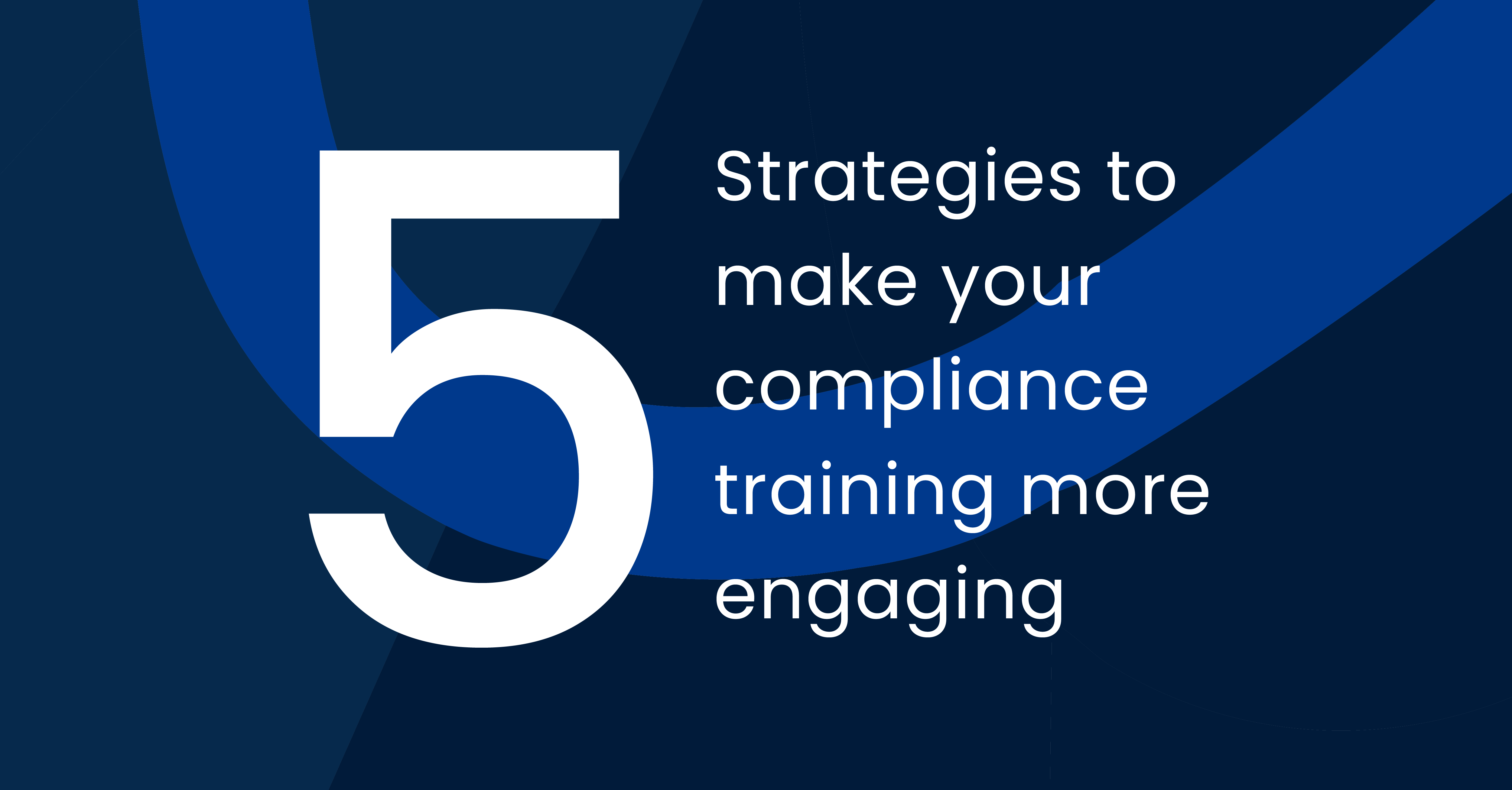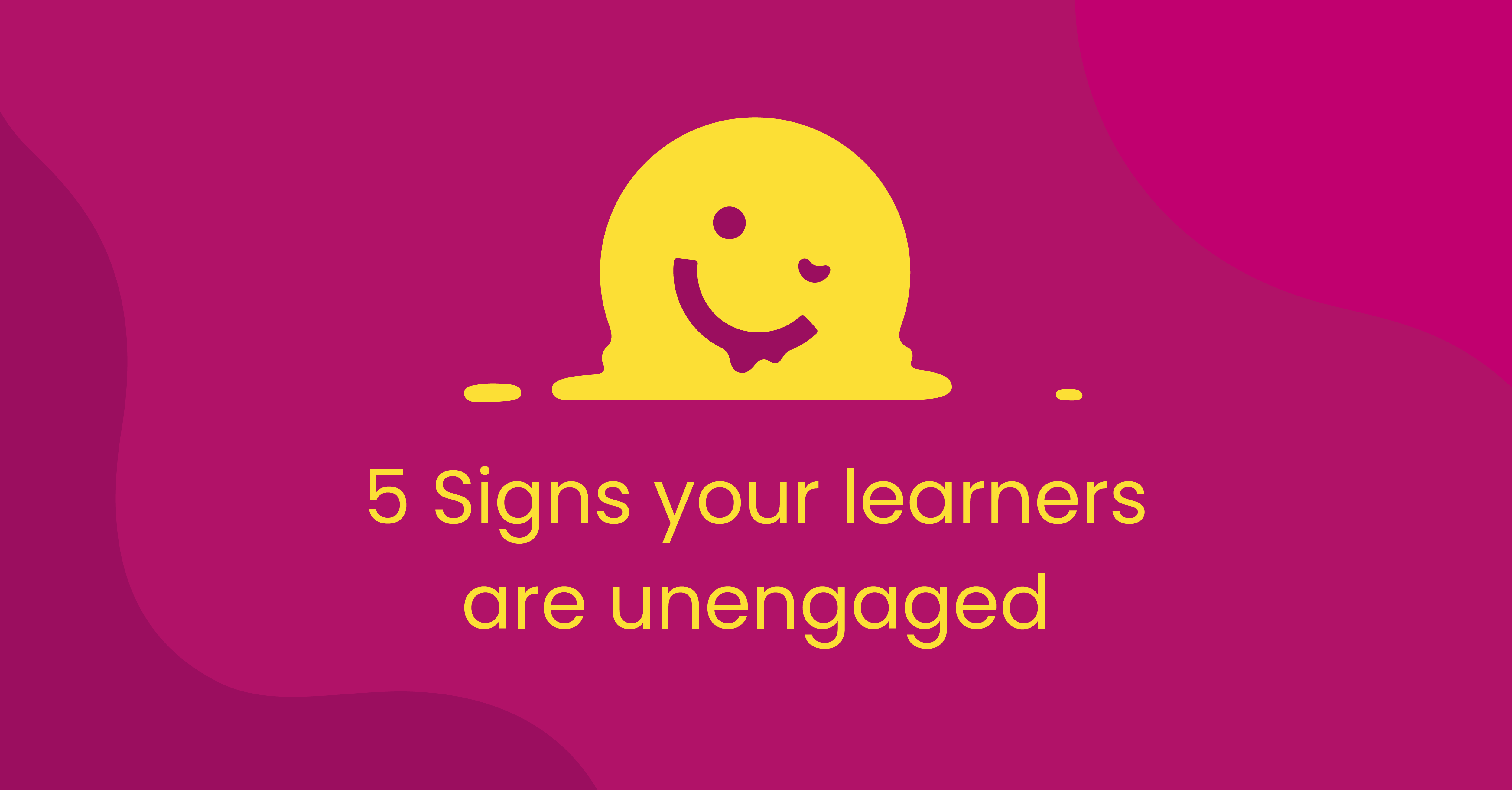Improving compliance training with pre-assessments
Compliance has become a bit of a dirty word for learners because there’s a lot of compliance training, and most of it isn’t very good. It’s often (barely) adapted from policies or legal documents making it dry, long, and boring.
The other frustrating thing is compliance training is often an annual treat. We’ve met experienced professionals in several fields who do the same safety training every year. Some have done it so many times they can pretty much recite the module word for word.
Organisations can become so focused on meeting regulations and proving people have completed compliance training they lose sight of the importance of a good learning experience. That’s a problem because boring learning is ineffective learning. People go through the motions and answer the questions, but don’t engage with the ideas. That can be dangerous if we’re talking health and safety, where boring learning puts your team at risk.
Fortunately, there’s a way around this situation. Pre-assessments are a simple solution that benefits both you and your poor, long-suffering, compliance over-burdened team.
How did we get here?
Compliance isn’t a bad thing. Governments use regulations to keep us safe, enforce laws, and minimise criminal behaviour.
However, some industries face particularly heavy regulation. In a high-risk industries like construction, engineering, and logistics, regulations exist to keep workers safe. In the financial space, regulations prevent corruption and protect people’s investments. In healthcare, regulations reduce the risk of patients being harmed. Employees need to understand these regulations to do their job. And that’s where compliance training comes in.
Not only do employees need to understand regulations for their own protection, but organisations also have to prove they’ve trained their staff on operating standards or be found liable for negligence. Part of regulatory bodies’ auditing teams’ role is to make sure people have been educated to do their jobs properly, and if they find an organisation hasn’t trained its team, they can take legal action. Some regulators conduct regular audits, others investigate only if there's been a breach of regulations. Businesses don't want auditors knocking at their door because it often means something’s gone wrong.
Compliance is in the learning spotlight
Many organisations invest in professional development like onboarding, team wellbeing, and leadership, but this can be seen as nice to have. Training employees to operate in accordance with the law so an organisation meets its statutory obligations is non-negotiable.
As a result, learning teams with limited resources spend most of their time doing compliance. And L&D teams often have limited resources. In an economic downturn, L&D are one of the first departments to have their budget cut because learning isn’t seen as a critical business function, and L&D teams can struggle to show the impact learning has on the bottom line.
Bad compliance training drags all learning down with it
Overstretched, under-resourced L&D teams can struggle to find enough time to make compliance training engaging. But bad compliance training gives all learning a bad name.
Companies that see compliance as a tick box exercise love e-learning because it can be tracked and used as a record for auditors. As a result, many people shudder when asked to do e-learning because they’ve had bad experiences with compliance e-learning in the past.
Poor compliance training also creates friction between the rest of your staff and your L&D team. There are a lot of disgruntled people out there who hate doing compliance training. And we often meet L&D teams who’ve bad reputations because employees see them as the team who force them to do all that boring compliance training they don't want to do.
Pre-assessments help restore compliance harmony
Everyone is super busy. We’re bombarded with info competing for our attention. If you ask people to waste an hour doing training they already know all the answers to, they’re not going to be pleased. And you’re setting yourself up for failure, because it doesn't matter how good your learning is if someone resents it before they've even started.
A pre-assessment invites people to prove to you they already understand a topic. More importantly, a pre-assessment shows you respect your learner's time and energy. Instead of forcing someone to do the same training every year, give them an opportunity to show they’re competent on the subject, and empower them to save time.
When people feel training is relevant to their situation and customised to their level of knowledge, they’re far more likely to engage with compliance training, and remember what they learned long term. That’s good news for them and for your organisation.
Design learning that respects people's knowledge, time, and energy along with your organisation’s bottom line
We don’t believe in forcing people to do learning they don’t need. And when it comes to annual compliance training, the best experience you can offer your learners is the option to skip training altogether if they already know their stuff.
That goes against the grain because we’re all learning enthusiasts and advocates. But when it comes to repeat compliance training, no matter how interactive and engaging your module is, nothing will delight your learners more than the opportunity to not do have to do the training at all. We were speaking to an L&D specialist who built a pre-assessment into their compliance training, and they said, “It was a hit with our learners! They felt their existing knowledge, and critically, their time was being respected.”
Also consider the time cost to your organisation of unnecessary compliance training. An Australian energy company told us about a gas safety training module all 4,000 staff have to do every year. That’s 4,000 hours invested right there. Imagine how much money they’ll save by allowing all the people who understand gas safety to skip that annual task.
How to build pre-assessments
A pre-assessment is a simple quiz with a few scenarios that allow a learner to prove they’re already competent on a subject. If they get the questions right, and demonstrate they know the topic, they’ve completed their compliance obligations for the year.
Chameleon is one of the few learning authoring tools that makes it ultra-easy to build pre-assessments into your compliance training. Our branching feature offers learners different paths through a module depending on their results. Simply start a module with a short quiz to assess a learner’s understanding of a topic. If they answer correctly, invite them to skip to the end of the module. If they get a few questions wrong, you can give them another go, and if they fail again, ask them to retake the course.
Here's how branching works with one compliance topic
- Answer quiz questions.
- Skip to end of learning.
- Offer a second go.
- Fail again. Sit module.
See this pre-assessment in action below
You can also use branching to include pre-assessments for more complex training that covers more than one topic. Instead of giving learners the option to skip to the end if they pass their quiz, you allow people to move to the next topic, where you set them a new quiz.
Here's how branching works with two compliance topics
- Topic 1. Answer quiz questions.
- Pass Topic 1. Skip to next topic.
- Fail Topic 1. Offer a second go.
- Fail Topic 1 again. Sit Topic 1 module.
- Topic 2. Answer quiz questions.
- Pass Topic 2. Skip to end of learning.
- Fail Topic 2. Offer a second go.
- Fail Topic 2 again. Sit Topic 2 module.
See this pre-assessment in action below
Learners still save time because if they know some topics but not others, their incorrect answers lead them only to the specific topics they need to review.
Hardly anyone’s doing a good job with pre-assessments so you can lead the way!
Pre-assessments aren’t a new learning concept, but during Covid a funny thing happened. Before Covid, the leading L&D authoring tool was Storyline. Storyline is very flexible, so you can build very bespoke learning, including pre-assessments. Unfortunately, it’s also complex to use. It takes a long time to build training, even if you’re a Storyline pro.
During Covid, all learning moved online. L&D teams had to build vast amounts of e-learning content overnight. The industry ditched Storyline and embraced Rise because it’s mobile-friendly, and quick and easy to use (Chameleon was a brand-new startup, only just on the scene). However, Rise has limited functionality, with no ability to build pre-assessments, so the whole learning industry took a step backwards in offering learners flexibility and respect.
You don’t have to force your learners to do the same compliance learning every year anymore, because Chameleon makes pre-assessments so easy. We even built you a free pre-assessment template, and if you need support our team are always here to help.
If you’re keen to discover an easy way to make compliance training more interactive and engaging, Check out our demo, or get in touch for more insights and tips on increasing learner engagement.
Share this
You May Also Like
These Related Stories

5 strategies to make your compliance training more engaging

5 signs your learners are unengaged (and what to do about it)
